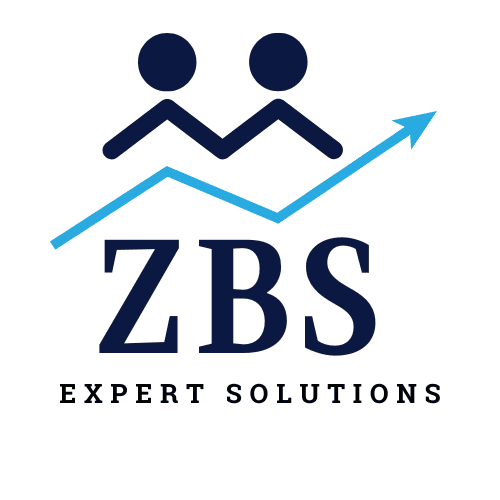
In today's digital landscape, businesses continuously seek innovative ways to streamline operations, enhance customer experience, and drive growth. One strategy that has gained significant traction is the adoption of Software as a Service (SaaS). At Zen Business Solutions, we've witnessed firsthand how leveraging SaaS can transform an organization, offering a scalable, efficient, and cost-effective solution to many traditional business challenges. This blog delves into the intricate concepts of how a robust SaaS strategy can fuel business growth.
Understanding SaaS: A Brief Overview
Software as a Service (SaaS) is a software distribution model in which applications are hosted by a service provider and made available to customers over the Internet. This model eliminates the need for businesses to install and maintain software on individual computers or servers, significantly reducing the burden of software management.
Key Characteristics of SaaS
1. Hosted on the Cloud: SaaS applications are hosted in the cloud, allowing users to access them from any device with an internet connection.
2. Subscription-Based Pricing: Businesses typically pay a recurring subscription fee, which can be monthly or annually.
3. Automatic Updates: The service provider handles software updates and maintenance, ensuring users always have access to the latest features and security enhancements.
4. Scalability: SaaS solutions can easily scale with the growth of the business, accommodating more users and increased usage without significant changes to the infrastructure.
5. Integration: SaaS applications often come with robust APIs and integration capabilities, allowing businesses to seamlessly connect various software solutions and create a unified ecosystem.
6. User-Friendly Interfaces: SaaS providers focus on delivering intuitive, user-friendly interfaces, making it easier for employees to adopt and utilize the software effectively.
The Benefits of a SaaS Strategy
1. Cost Efficiency
Traditional software models often require substantial upfront investments in licenses, hardware, and IT personnel for installation and maintenance. In contrast, SaaS operates on a subscription basis, spreading costs over time and reducing the need for significant capital expenditure. This model allows businesses to allocate resources more effectively, investing in other growth initiatives.
2. Flexibility and Scalability
As businesses grow, their software needs evolve. SaaS solutions offer the flexibility to scale up or down based on current demands. Whether adding new users, integrating additional features, or expanding storage capacity, SaaS providers can accommodate these changes seamlessly. This scalability ensures that businesses can respond swiftly to market changes and customer needs.
3. Improved Collaboration and Accessibility
SaaS applications are accessible from anywhere with an internet connection, fostering collaboration among teams regardless of their location. This is particularly beneficial for businesses with remote or distributed workforces. Real-time access to shared data and tools enhances productivity and ensures everyone is working with the most up-to-date information.
4. Enhanced Security
SaaS providers invest heavily in security measures to protect their customers' data. With automatic updates and regular security patches, businesses can trust that their information is safeguarded against the latest threats. Achieving this level of security independently can be challenging for individual companies.
5. Integration Capabilities
SaaS solutions often come with robust APIs and integration features, enabling businesses to connect various software systems and create a seamless operational environment. This integration enhances workflow efficiency and data consistency across different platforms, allowing for better decision-making and streamlined processes.
6. User-Friendly Interfaces
SaaS providers prioritize user experience, offering intuitive and easy-to-navigate interfaces. This user-centric design reduces the learning curve for employees, leading to faster adoption and more effective utilization of the software. Improved usability also minimizes the need for extensive training, saving time and resources.
7. Focus on Core Competencies
By outsourcing software management to a SaaS provider, businesses can focus on their core competencies. This shift allows internal IT teams to dedicate more time to strategic initiatives that drive growth, rather than routine maintenance tasks.
SaaS Ecosystem in Our Organization
At Zen Business Solutions, we've implemented a comprehensive SaaS strategy that has significantly contributed to our growth. By adopting a range of SaaS applications, we've streamlined our operations, enhanced collaboration across teams, and improved our customer service capabilities. Our SaaS strategy has allowed us to scale efficiently, reduce costs, and focus on delivering exceptional value to our clients.
Key Outcomes:
- Increased Efficiency: Automated processes have reduced manual workloads, allowing our team to focus on high-value tasks.
- Scalable Growth: We've seamlessly scaled our operations to meet increasing demand without significant infrastructure changes.
- Enhanced Security: Robust security measures have protected our data and built trust with our clients.
- Improved Collaboration: Cloud-based tools have facilitated better communication and collaboration among our remote teams.
- Seamless Integration: Our various SaaS applications work together seamlessly, creating a cohesive and efficient operational environment.
- User Adoption: The user-friendly interfaces of our SaaS solutions have led to quick adoption and effective use by our team members.
Conclusion
A well-executed SaaS strategy can be a game-changer for businesses looking to drive growth and stay competitive in today's fast-paced market. By understanding the benefits and best practices for SaaS implementation, organizations can unlock new levels of efficiency, scalability, and innovation. At Zen Business Solutions, we are committed to helping businesses harness the power of SaaS to achieve their goals and thrive in the digital era.




